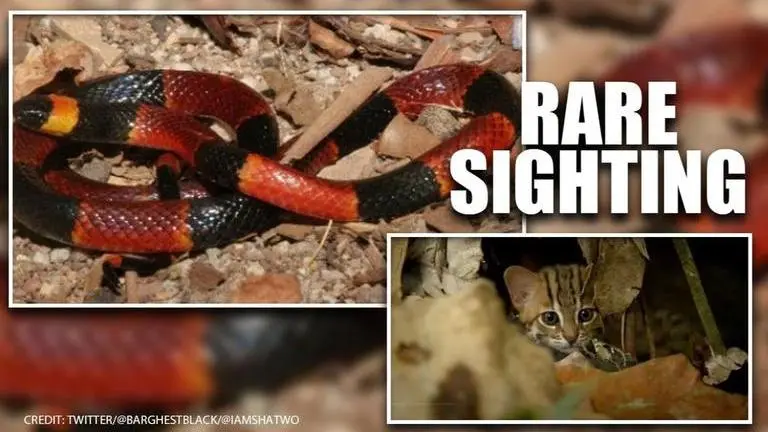Updated 4 March 2020 at 12:07 IST
Two rare wildlife species spotted in Pilibhit Tiger Reserve in UP
Two rare wildlife species,Rusty-spotted cat, and Coral Red kukri Snake were seen in the forest while the forest officer was doing his routine monitoring.
- India News
- 2 min read

Two rare and near-extinct species of wild animals have reportedly been spotted in Pilibhit Tiger Reserve in Shahjahanpur, Uttar Pradesh by the field director H Rajamohan. The Rusty-spotted cat and Coral Red kukri Snake were seen in the forest while the forest officer was doing his routine monitoring, confirmed the reports.
According to the reports, the rusty-spotted cat has been included in the Red List of the International Union for Conservation of Nature (IUCN). It is one of the near-threatened species that weighs about 1.5 kg and is 35 to 45 cm in length and is on the verge of extinction. Rusty-spotted cats (prionailurus rubiginosus) are also the world’s smallest feline species on the planet. Danielle Miles, a wildlife researcher mentioned in Animal Diversity Web that the rare species is a smaller version of a leopard and is about the size of a hand.
Advertisement
Spotted after a decade
The Red Coral Kukri Snake was initially spotted in Dudhwa and then in Chitwan National Park in Nepal close to the Valmiki Tiger Reserve in Bihar. Rajamohan said in the media reports that the snake was nocturnal and normally preys on earthworms and larvae. It remained underground most of the time and was rarely seen on the ground during the day. The rare Coral Red Khukri Snake varies from 48 to 114 cms, and the dorsal colour in all the snakes was uniformly coral red or bright orange as per an international research study. They have only been sighted four times in India.
Rajamohan told the media that the two species have been spotted after a decade. They need to be conserved because they are listed in schedule I and IV of the Wildlife Protection Act, 1972. The field officer has ordered the forest personnel to collect all possible details about the species so that the conservation plan could be worked out, confirmed media reports.
Advertisement
Published By : Zaini Majeed
Published On: 4 March 2020 at 12:07 IST
